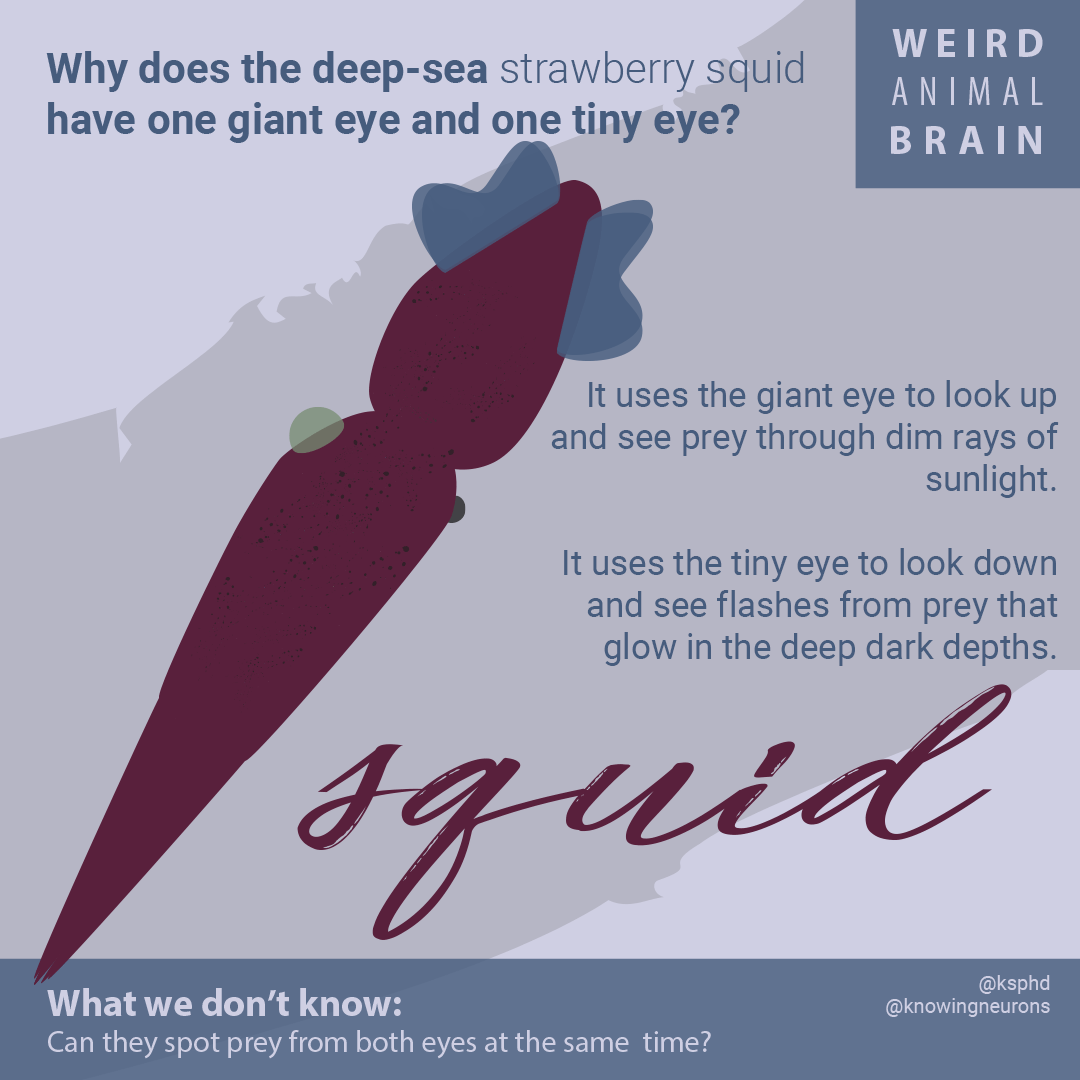Also known as the cock-eyed squid, this beautiful and weird creature is unique not only because of its similarities to a strawberry, but also because of its two very special eyes. Like many others creatures who live in the deep ocean, the strawberry squid has figured out a special way to spy on prey in little to no light. Learn more in the infographic below:
For more info:
Higgins, C. (2016). The Case of the Green-Eyed Squid. Retrieved August 27, 2017, from http://mentalfloss.com/article/82383/case-green-eyed-squid
Simon, M. (2016). Absurd Creatures: Why the Strawberry Squid Has One Tiny Eye and One Giant Eye. Retrieved August 27, 2017, from https://www.wired.com/2016/04/absurd-creatures-strawberry-squid-one-tiny-eye-one-giant-eye/
Thomas, K. N., Robison, B. H., & Johnsen, S. (2017). Two eyes for two purposes: in situ evidence for asymmetric vision in the cockeyed squids Histioteuthis heteropsis and Stigmatoteuthis dofleini. Philosophical Transactions of the Royal Society B: Biological Sciences, 372(1717), 20160069. doi:10.1098/rstb.2016.0069







